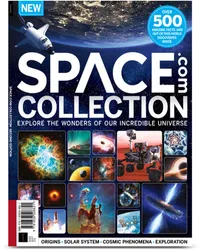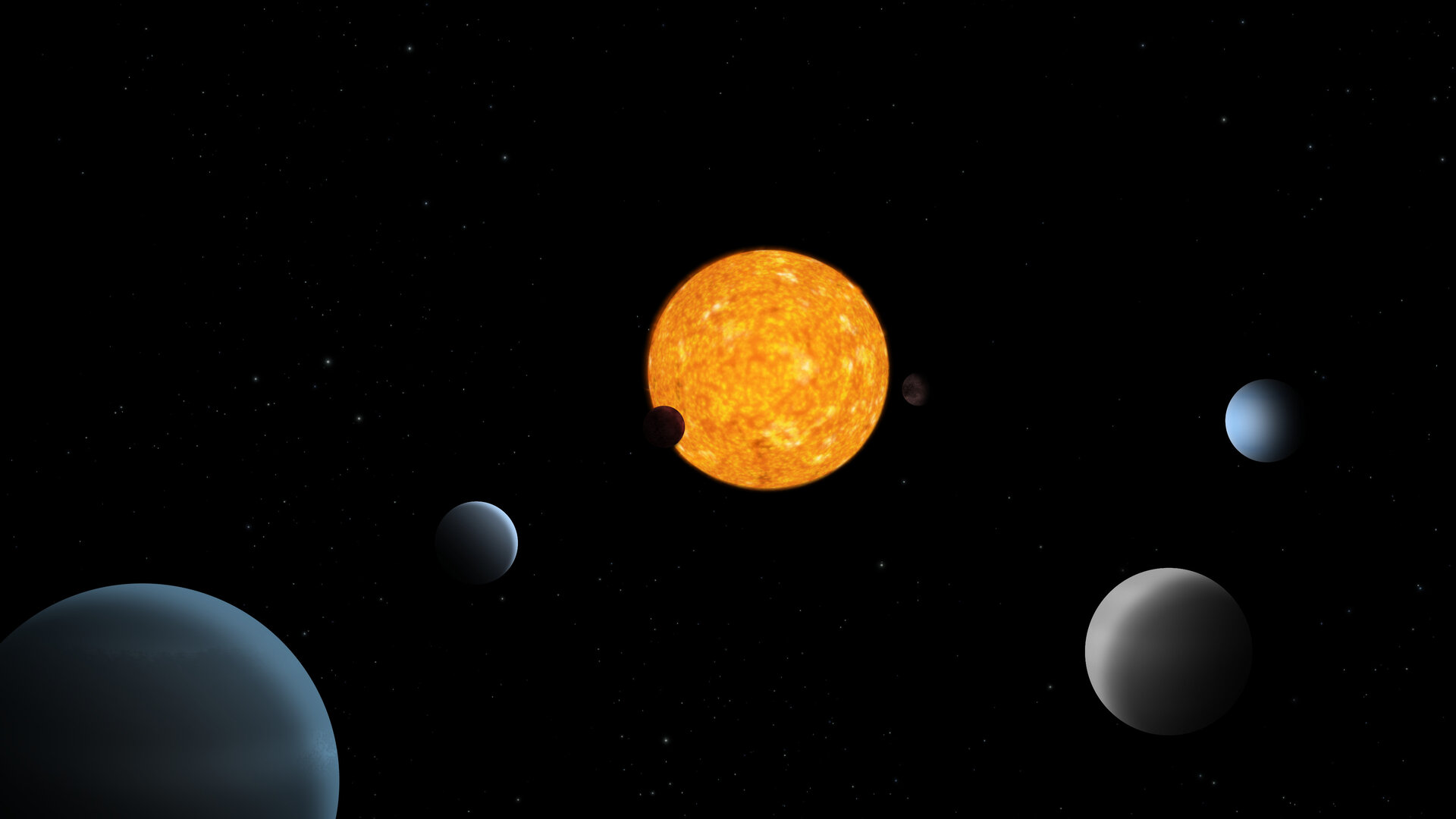Scientists spot 6 alien worlds orbiting a star in strange — but precise — harmony
The planets around a star called TOI-178 know how to keep a beat — so smoothly, in fact, that scientists were able to discover new alien worlds by deciphering the system's music.
Astronomers poring through data from NASA's Transiting Exoplanet Survey Satellite (TESS) discovered three planets around a star dubbed TOI-178 (TOI stands for TESS Object of Interest). And when scientists looked at these observations more closely, they realized that the worlds seemed to be keeping time against each other. So they recruited some more instruments — and discovered the system hosts at least six planets, five of which tick off orbits in rhythm with the others. And unlike those of other synchronized systems, the planets are an unusually mixed bag.
"It is the first time we observe something like this," Kate Isaak, project scientist for the European Space Agency's Characterizing Exoplanet Satellite (CHEOPS), one of those additional instruments, said in a statement released by the University of Bern in Switzerland. "In the few systems we know with such a harmony, the density of planets steadily decreases as we move away from the star. In the TOI-178 system, a dense, terrestrial planet like Earth appears to be right next to a very fluffy planet with half the density of Neptune, followed by one very similar to Neptune."
Related: 7 ways to discover alien planets
Space.com Collection: $26.99 at Magazines Direct
Get ready to explore the wonders of our incredible universe! The "Space.com Collection" is packed with amazing astronomy, incredible discoveries and the latest missions from space agencies around the world. From distant galaxies to the planets, moons and asteroids of our own solar system, you’ll discover a wealth of facts about the cosmos, and learn about the new technologies, telescopes and rockets in development that will reveal even more of its secrets.
Inspired by the mysterious TESS data showing three planets in an odd rhythm, the scientists behind the new research recruited additional instruments culminating in a dozen days of observing time with the CHEOPS telescope.
From those observations, the TOI-178 system appeared to include five planets, which orbited the star every 2, 3, 6, 10 and 20 days. But to the scientists, there appeared to be a gap in that sequence: They thought there should be another planet in the system, this one orbiting every 15 days.
Back to CHEOPS the researchers went, although they nearly missed their chance at studying the system in detail. Just as CHEOPS was due to take crucial observations of TOI-178, the satellite had to hustle away from a potential collision with a piece of space junk.
Breaking space news, the latest updates on rocket launches, skywatching events and more!
Space.com Collection: $26.99 at Magazines Direct
Get ready to explore the wonders of our incredible universe! The "Space.com Collection" is packed with amazing astronomy, incredible discoveries and the latest missions from space agencies around the world. From distant galaxies to the planets, moons and asteroids of our own solar system, you’ll discover a wealth of facts about the cosmos, and learn about the new technologies, telescopes and rockets in development that will reveal even more of its secrets.
Despite the close call, all went smoothly in the end.
"To our great relief, this maneuver was done very efficiently and the satellite could resume observations just in time to capture the mysterious planet passing by," Nathan Hara, an astrophysicist at the University of Geneva and co-author on the new research, said in the statement. "A few days later, the data clearly indicated the presence of the additional planet and thus confirmed that there were indeed six planets in the TOI-178 system."
The innermost of those, it turns out, marches to a different beat, but the outer five orbit in harmony with each other. For every complete orbit of the outermost world, the next in completes one and a quarter orbit, the middle world in the sequence makes two loops, then a planet that makes three orbits, and then a planet that makes six orbits; along the way, the planets occasionally line up, which caused the strange rhythm in the original TESS data.
Not only could the researchers spot the additional planets and sort out the complicated chain of orbits, but the scientists could also study the planets themselves, finding that these worlds range from 1.1 to 3 times the size of Earth, but with a range of densities, making them a curious mix of rocky super-Earths and gassy mini-Neptunes.
The scientists suspect that there may be more planets following the same chain of orbital alignments, although spotting these worlds would require longer periods of observation. Fortunately, because the star itself is so bright, the system is relatively easy to study; in particular, the researchers look forward to the data that NASA's James Webb Space Telescope and the European Extremely Large Telescope might be able to gather about the system once each begin work.
The research is described in a paper published today (Jan. 25) in the journal Astronomy & Astrophysics.
Email Meghan Bartels at mbartels@space.com or follow her on Twitter @meghanbartels. Follow us on Twitter @Spacedotcom and on Facebook.

Meghan is a senior writer at Space.com and has more than five years' experience as a science journalist based in New York City. She joined Space.com in July 2018, with previous writing published in outlets including Newsweek and Audubon. Meghan earned an MA in science journalism from New York University and a BA in classics from Georgetown University, and in her free time she enjoys reading and visiting museums. Follow her on Twitter at @meghanbartels.


